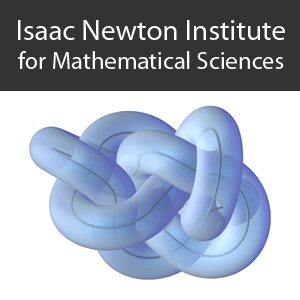New conservation laws of helical flows
40 mins 40 secs,
354.81 MB,
WebM
640x360,
29.97 fps,
44100 Hz,
1.16 Mbits/sec
Share this media item:
Embed this media item:
Embed this media item:
About this item

| Description: |
Oberlack, M (TU Darmstadt)
Monday 23 July 2012, 14:00-14:40 |
|---|
| Created: | 2012-07-30 17:22 |
|---|---|
| Collection: | Topological Dynamics in the Physical and Biological Sciences |
| Publisher: | Isaac Newton Institute |
| Copyright: | Oberlack, M |
| Language: | eng (English) |
| Distribution: |
World
|
| Explicit content: | No |
| Aspect Ratio: | 16:9 |
| Screencast: | No |
| Bumper: | UCS Default |
| Trailer: | UCS Default |
| Abstract: | Conservation laws in incompressible fluid dynamics, in particular inviscid motion, constitute an axiomatic basis for fluid mechanics. In 3D, mass and momentum conservation forms the fundamental basis, which is further extended by energy, vorticity and helicity conservation. Interesting enough considering reduced dimensions a much broader set of conserved quantities is observed in particularly for 2D/planar and axisymmetric flows. For the planar case it is well known that any once differential function of the vorticity is a materially conserved quantity and hence an infinite number of additional conservation laws exist. Further, the most simple one, the square of the vorticity, is named enstrophy, and is “weakly conserved” in the viscous case and constitutes a fundamental invariant for 2D turbulence. Recently we have shown that the known set of additional conservation laws may be considerably extended for helical flows which constitute a Lie symmetry induced concaten ation of planar and axisymmetric flows living on the (r, a z + b \phi; t) spatially reduced system with a^2 + b^2 > 0 and r, z, \phi are the classical coordinates in a cylinder coordinate system. Various infinity dimensional new conservations laws have been established including e.g. a generalized helicity. Even for the 2D/planar and axisymmetric flows new conservation laws have been derived not reported in the literature before. The construction of the new results is based on the “direct method”. It relies on two key theorems: (i) the Euler operator applied to a term is always zero if and only if the term is in divergence form; (ii) any non-trivial conservation law of a given set of differential equations can only be constructed by a linear combination of the given equations with some multipliers to be determined by theorem (i). This is a necessary and sufficient condition. The process of finding the new conservation laws was aided by the computer algebra system Maple employing the package GeM by A. Cheviakov. |
|---|---|
Available Formats
| Format | Quality | Bitrate | Size | |||
|---|---|---|---|---|---|---|
| MPEG-4 Video | 640x360 | 1.84 Mbits/sec | 563.86 MB | View | Download | |
| WebM * | 640x360 | 1.16 Mbits/sec | 354.81 MB | View | Download | |
| Flash Video | 484x272 | 568.56 kbits/sec | 169.28 MB | View | Download | |
| iPod Video | 480x270 | 506.17 kbits/sec | 150.70 MB | View | Download | |
| MP3 | 44100 Hz | 125.05 kbits/sec | 37.09 MB | Listen | Download | |
| Auto | (Allows browser to choose a format it supports) | |||||

